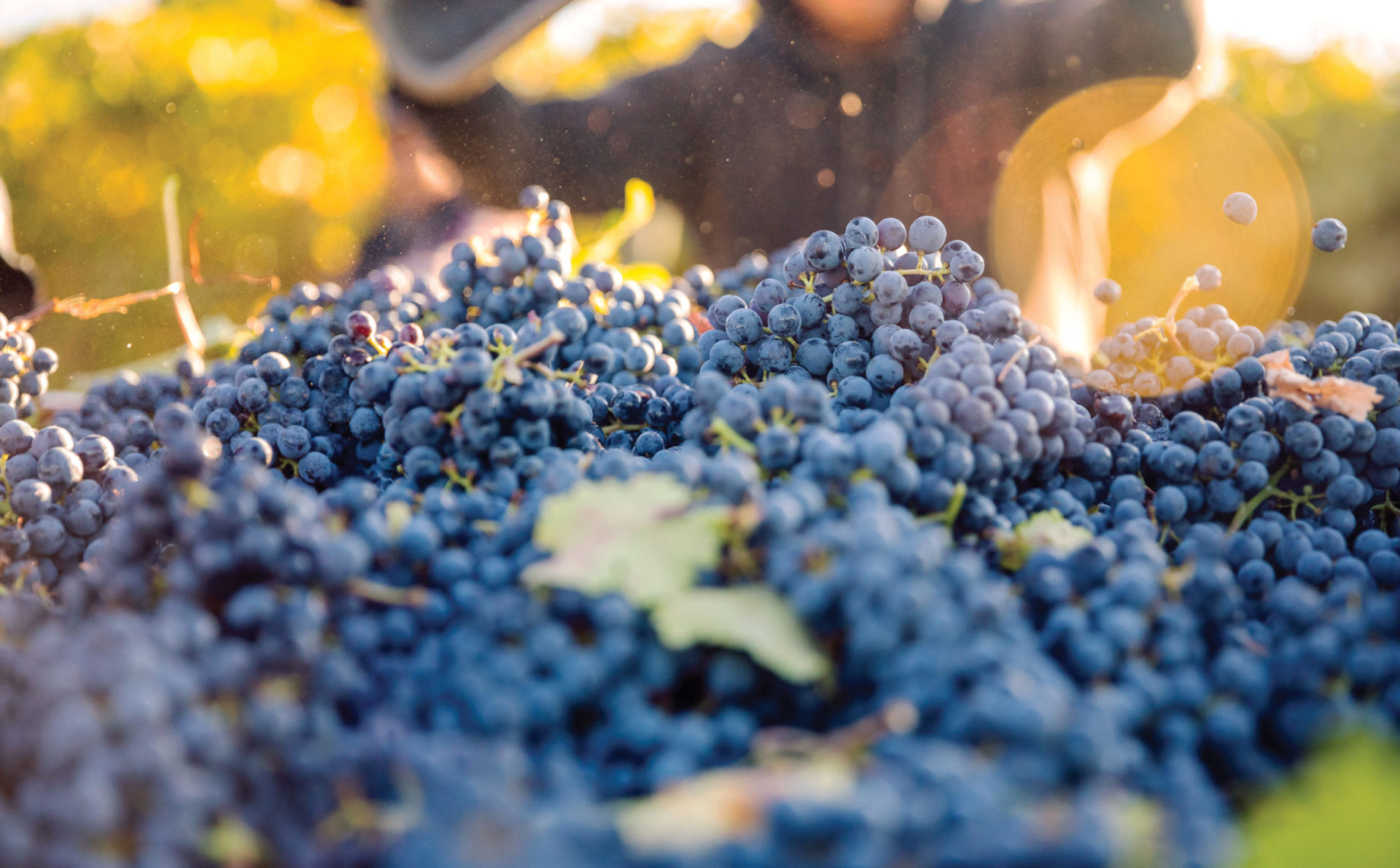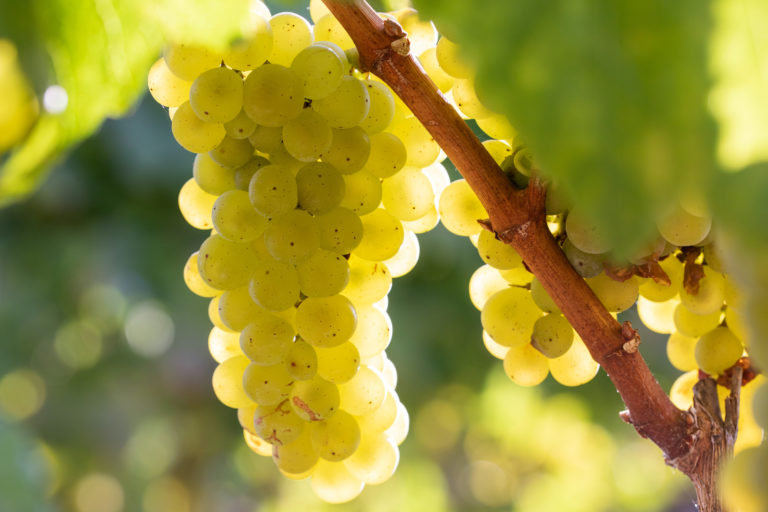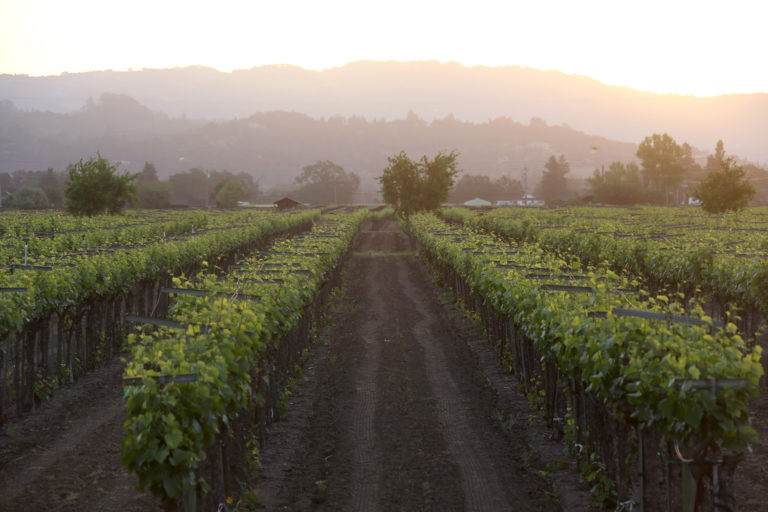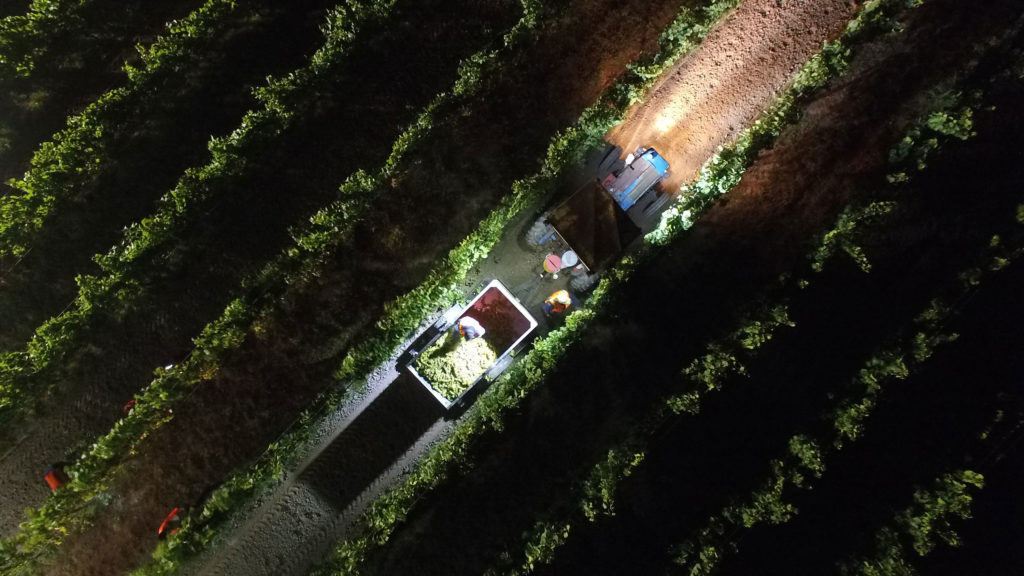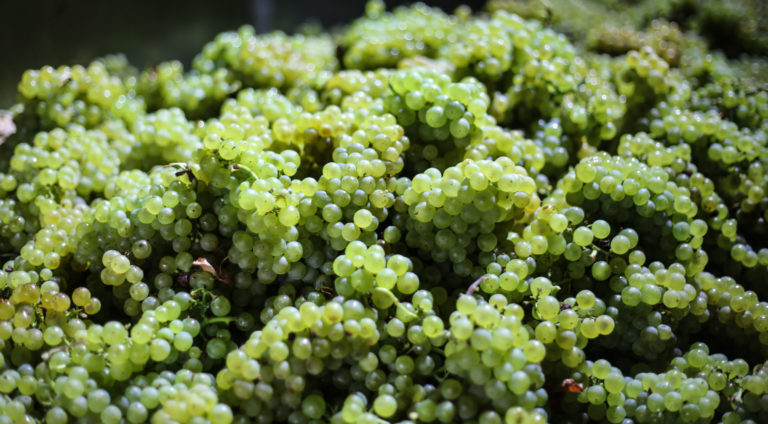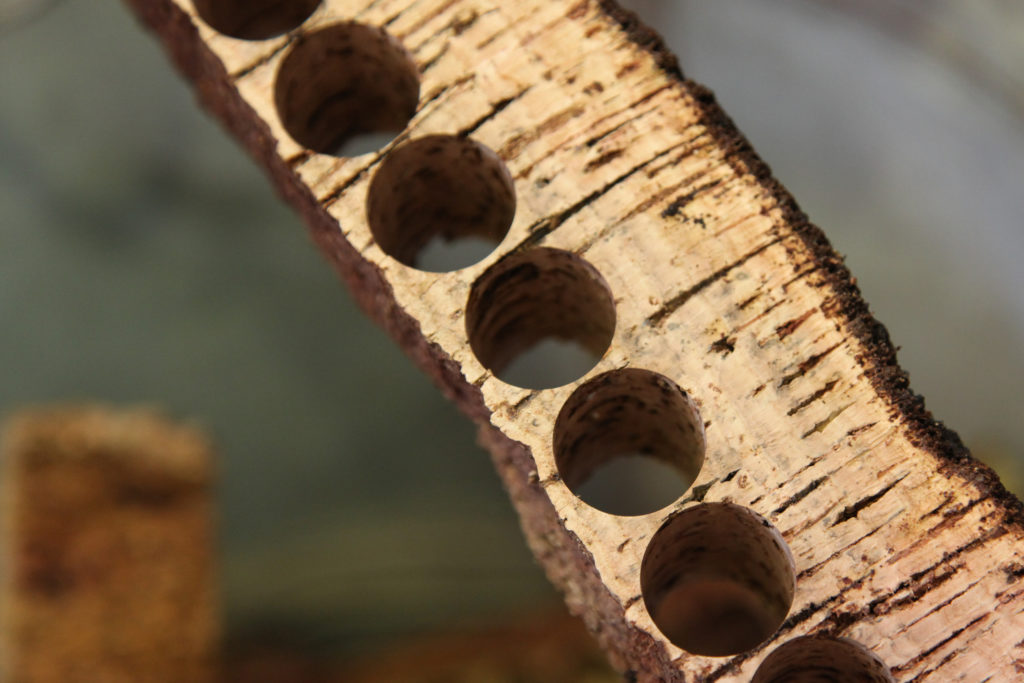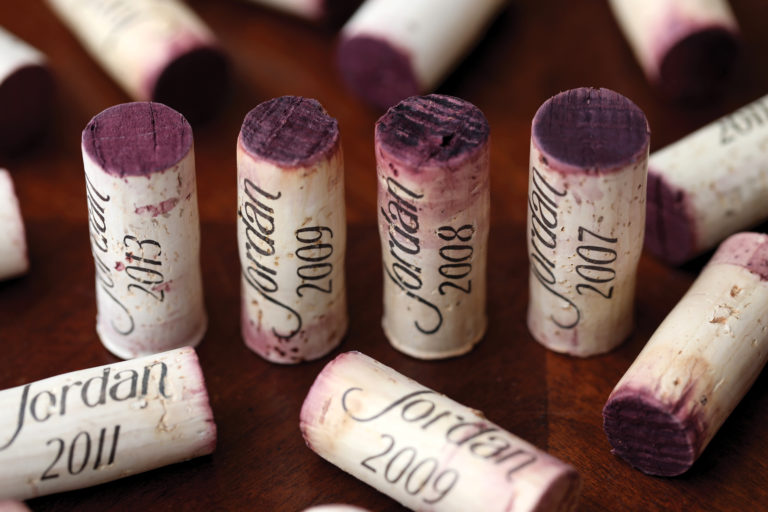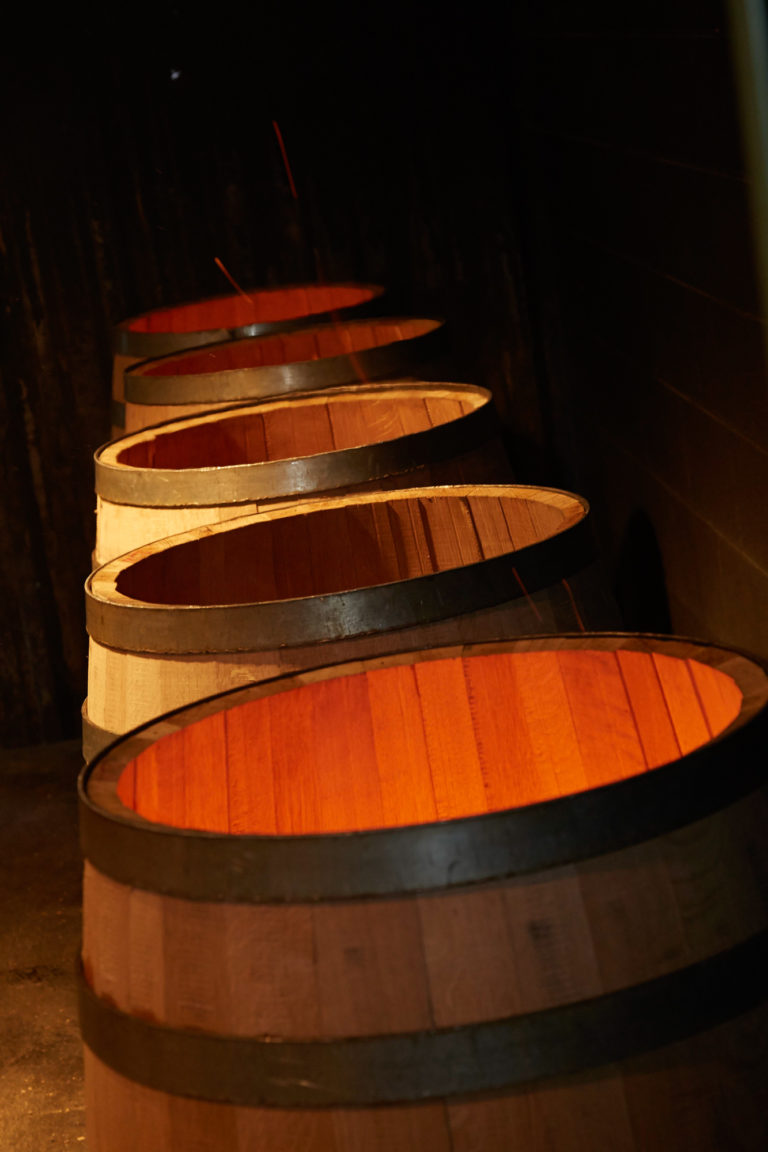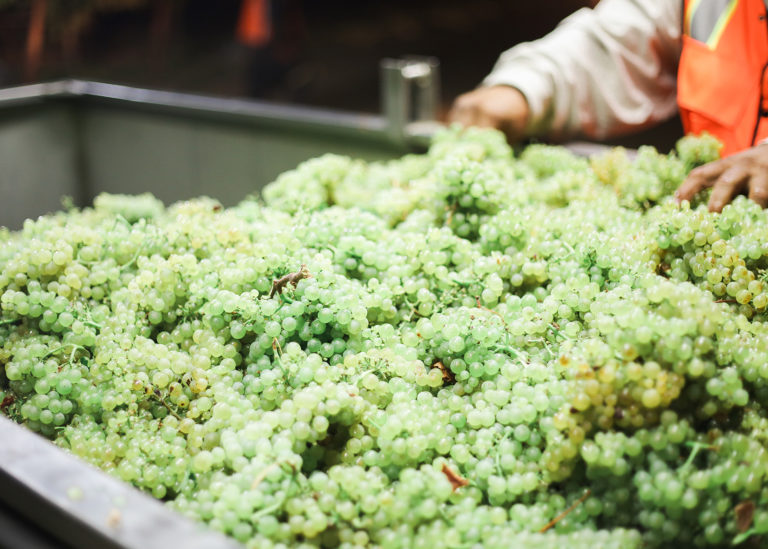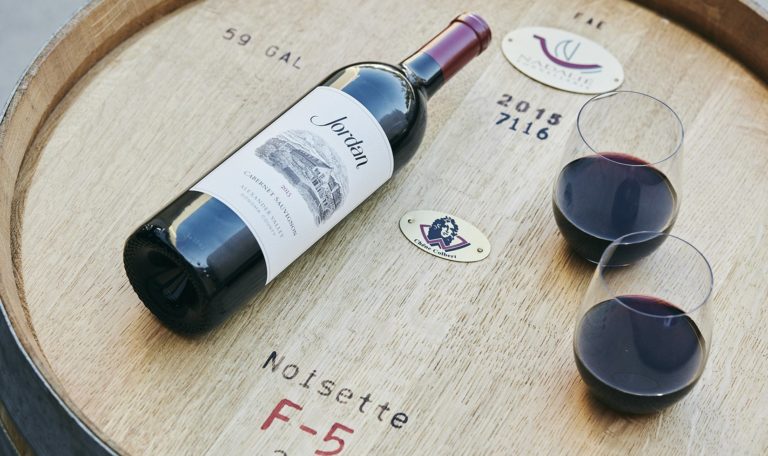
harvesting for elegance
The decision of when to pick Jordan Chardonnay grapes follows a simple but complicated premise: Harvest the grapes at the beginning of their ripeness spectrum. We pick our chardonnay grapes when the sugars are slightly lower than most producers (around 22-23 Brix) because we want to preserve the brightest, freshest, stone fruit flavors and the crisp acids in the grapes without letting them ripen into tropical fruits with higher sugars and thus higher alcohol. Elegance and vibrance are key.
press cuts
At the winery, the gondolas of freshly harvested grapes are kept separate by grower and by individual vineyard block as they pass through the hopper, sorting table and destemmer into our state-of-the-art presses, installed in 2020. The two high-tech presses allow us to gently and quickly press the juice to retain its purity of fruit and aromas while minimizing any flavor extraction from the grape skins. During the pressing, our winemaker conducts three press cuts, which is distinct to our winemaking approach. Each time the grapes are pressed, a small cup of juice is taken from the press and placed in a row. The first cup is actually free-run juice with only the weight of the grapes pressing the juice through gravity. Each cup represents a bit more flavor extraction, and the juice shows a darker, more golden color as the pressing continues. The winemaker tastes each cup along the way until the last press, also known as the hard press. Once the pressings hit the quality point where the juice is starting to take on the taste of the skins, the winemaker cuts off the press. No more juice will be pressed from those grapes—regardless of how much remains. Leftover juice and skins go to our compost pile, along with the grape stems.
elevage & fermentations
Elevage is a French term for the raising of the wine—the process of nurturing a young wine from fermentation to barrel to bottling. In many ways, it’s like coaching an athlete from childhood to high school to college. At Jordan, sometimes the young athletes make the draft, and in other years, they take a seat on the bench.
After press cut selections for Jordan Chardonnay, primary fermentation takes place in about 30 percent stainless steel tanks and 70 percent new French oak barrels from a half-dozen cooperages. This allows our winemaker to impart the tannin structure of fine oak subtly into the wine without overpowering it.
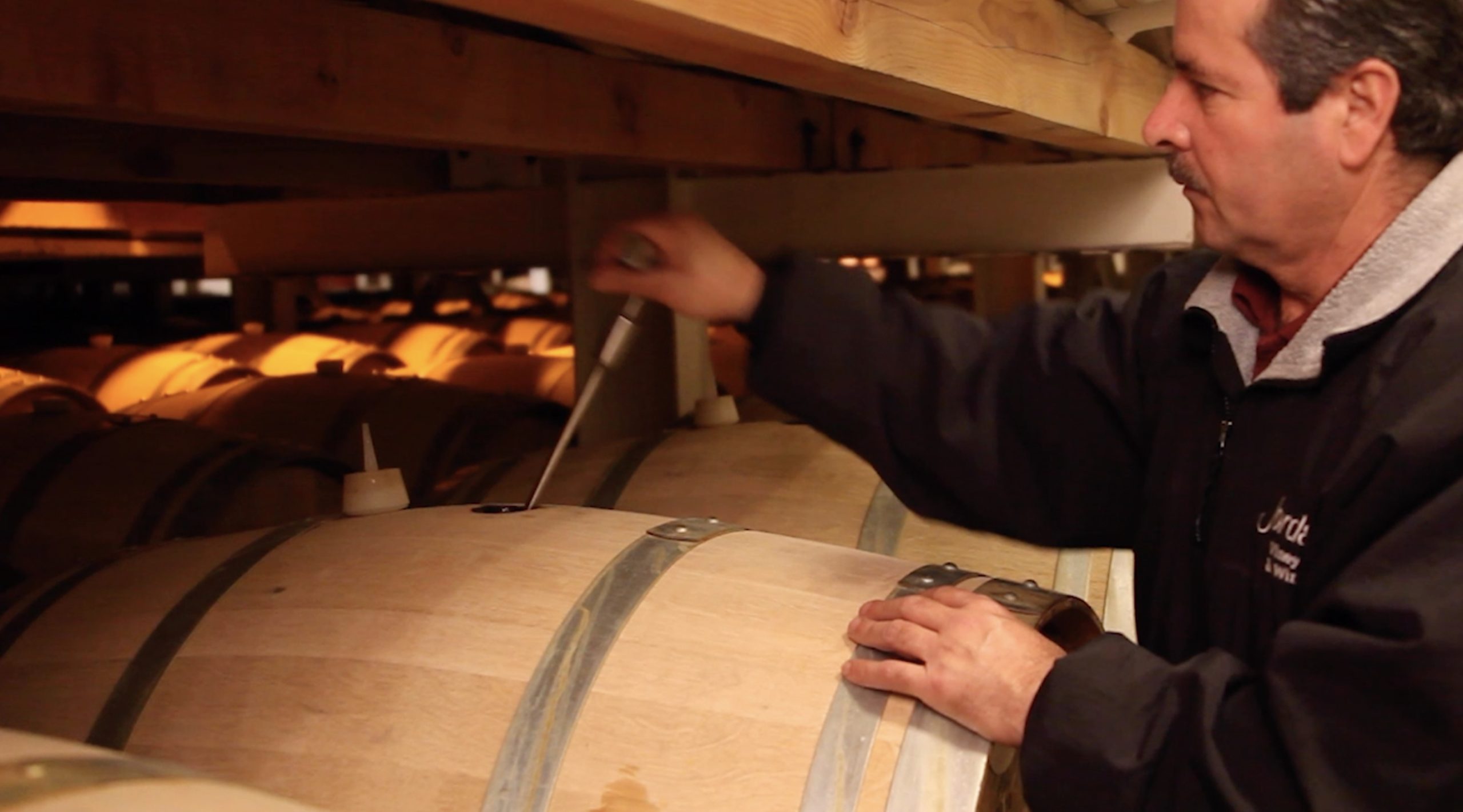
Malolactic fermentation, which softens the tart acids in wine, occurs spontaneously and typically begins in early winter. It is always limited to 30 percent or less, depending on the vintage, to preserve the freshness of fruit and bright acidity in Jordan Chardonnay. Lower malolactic fermentation is the main reason why Jordan doesn’t taste buttery like many other chardonnays. After malolactic fermentation is complete, there is no barrel blend created for Jordan Chardonnay—this is one of the major differences between Jordan Cabernet Sauvignon winemaking. All lots of wine continue to be kept separate by vineyard and by block. The hard press cuts are also kept aside to see how they evolve after barrel aging—and if they will be elevated from the bench to be a player in the final blend team.
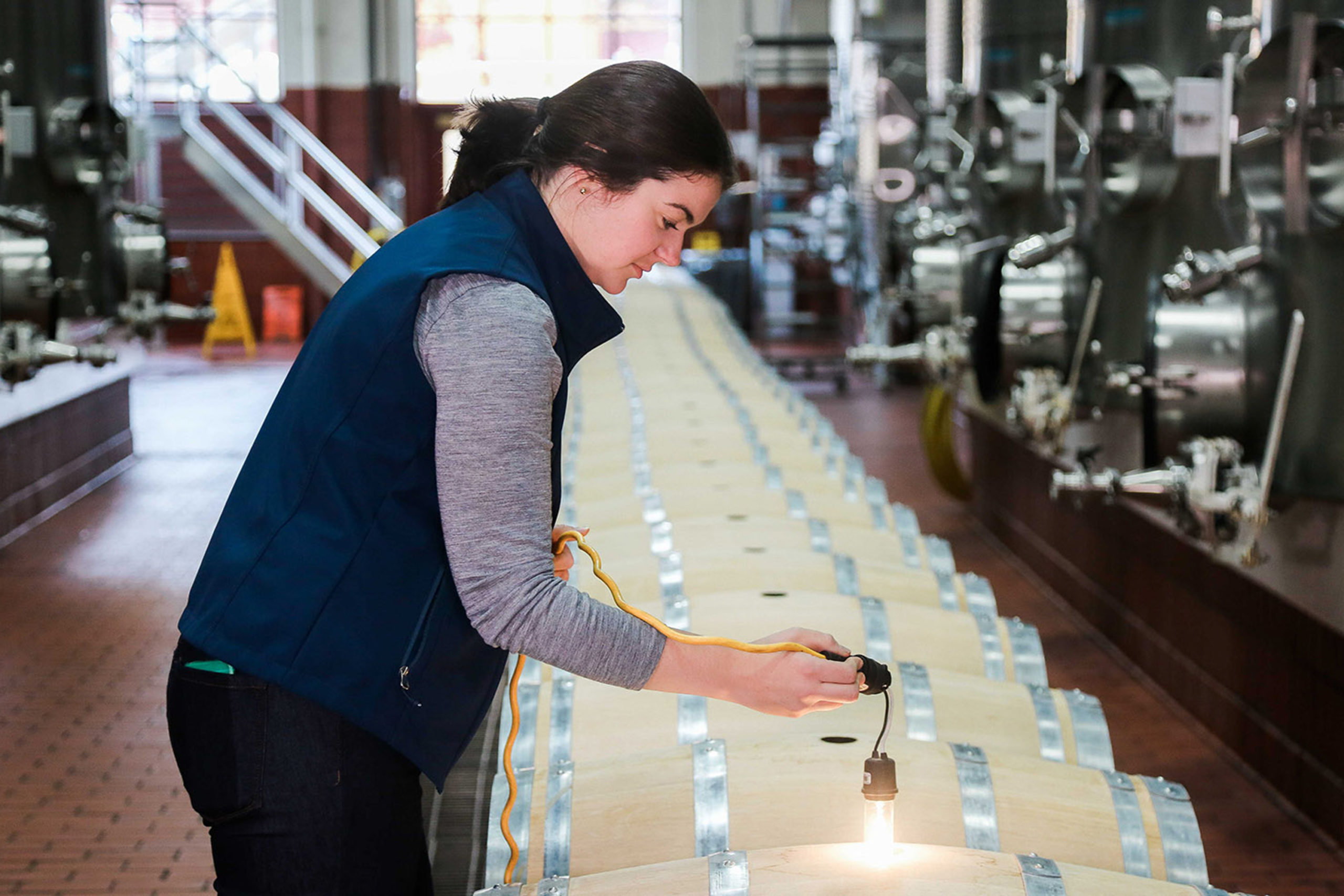
Beginning with the 2019 vintage, our 40th anniversary release, Jordan Chardonnay is bottled exclusively with DIAM corks. Made of natural cork and beeswax, this closure carries a 100-percent guarantee that the wine cork is free of taint or off-flavors. This new technology also ensures a consistent oxygen transmission rate between the wine and the porous cork, so that every bottle of wine ages consistently. All of these quality measures ensure that every bottle of Jordan Chardonnay opened has the same consistency of taste that earned the winemaker’s approval when it arrived on the bottling line.
Jordan Chardonnay is aged in bottle for about six months before it is released and ready to enjoy, which allows the aromas and flavors to harmonize.
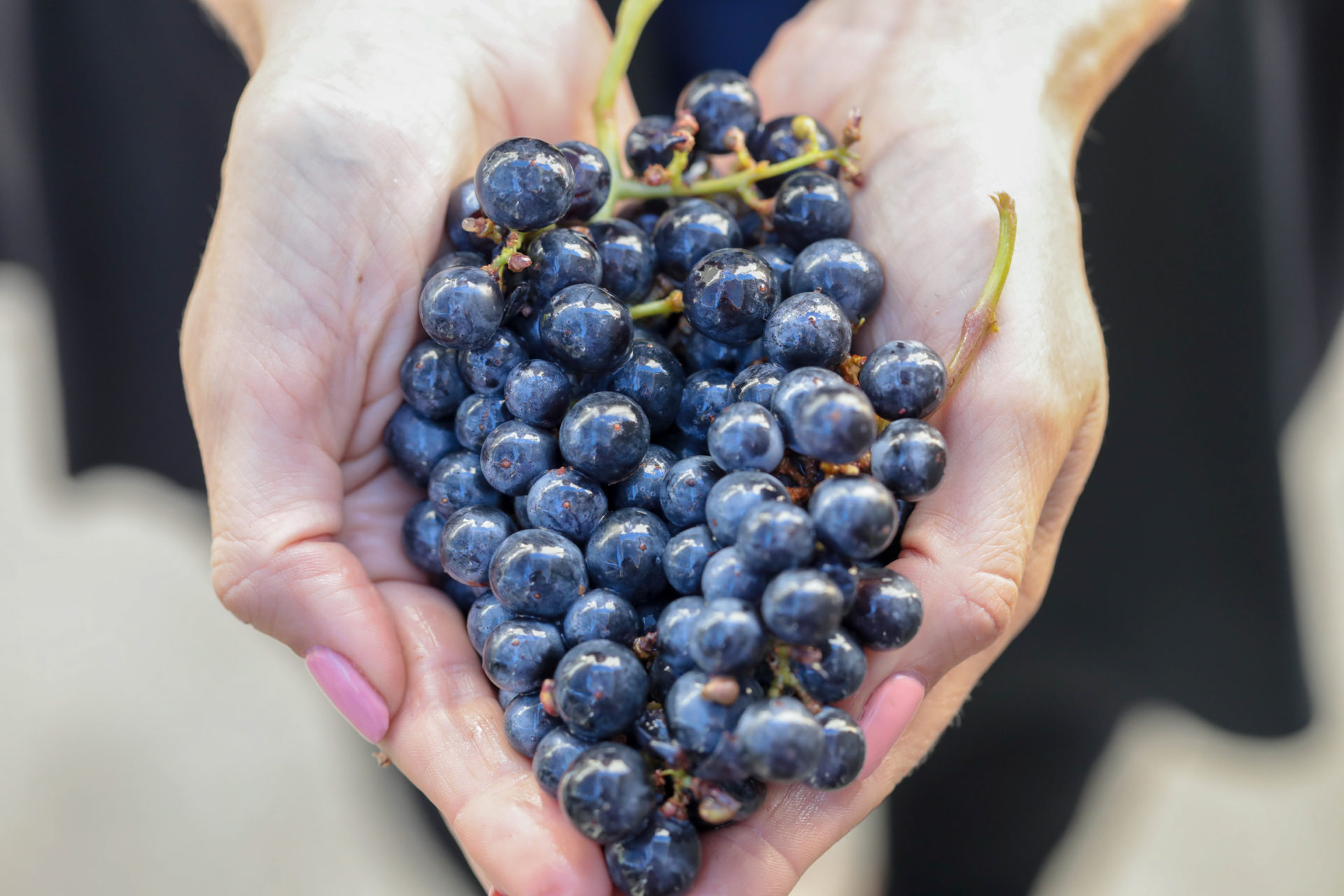
cabernet winemaking
a bordeaux blend
Jordan Cabernet Sauvignon has always been crafted from a combination of Bordeaux grape varieties, though the blend has changed over the years, and percentages of each grape are adapted slightly to the nuances of each vintage. Merlot helps to soften Cabernet Sauvignon’s firm tannins, petit verdot brings blueberry fruit flavors and broadens the mid-palate, and malbec contributes a stunning, deep color. The only classic Bordeaux grape that has not been a consistent part of the Jordan Cabernet Sauvignon blend since the mid-2005s is cabernet franc.
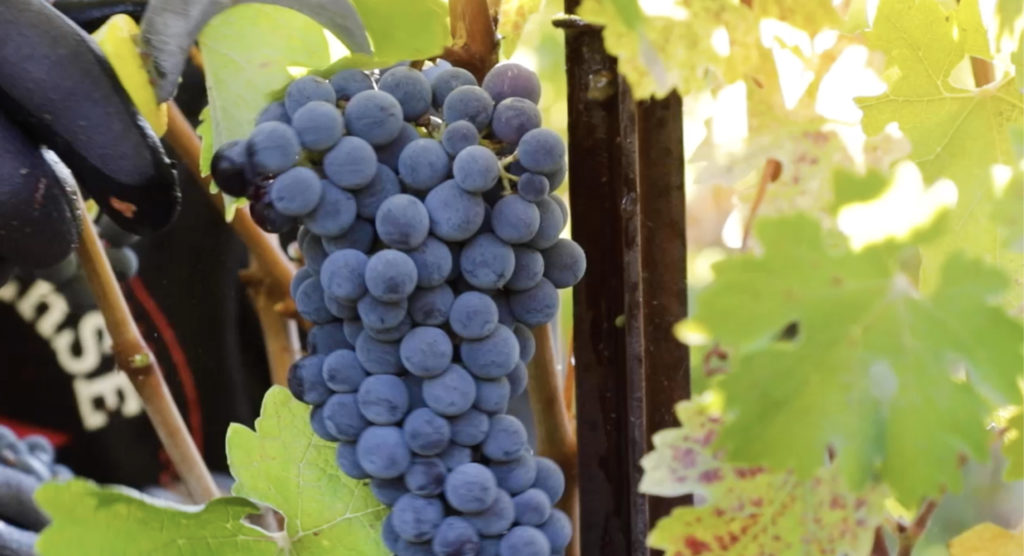
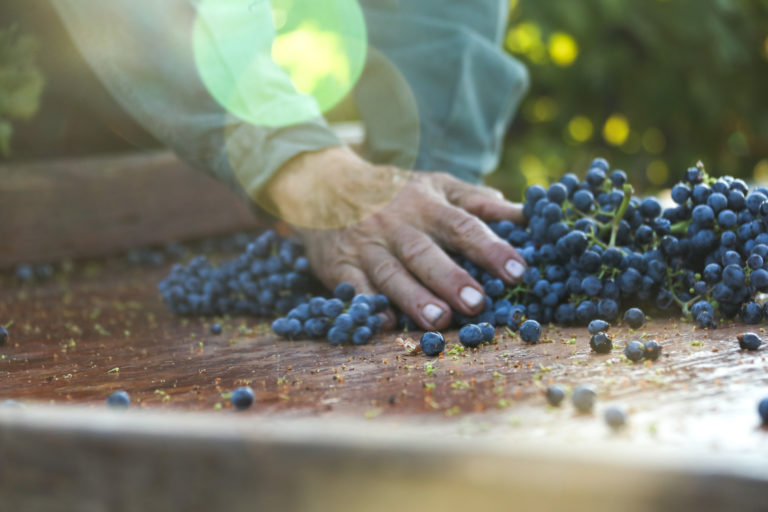
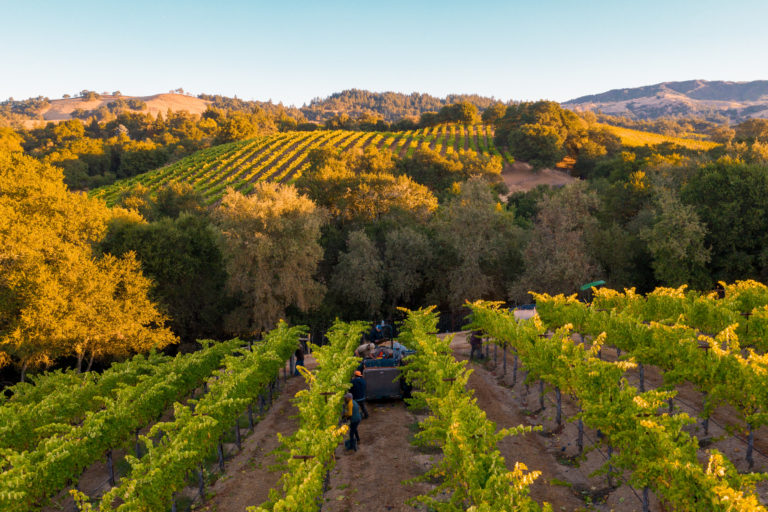
harvesting for elegance
The decision of when to pick Jordan Cabernet Sauvignon grapes is based on many factors, but the goal has remained unchanged for decades: Harvest a uniform crop at respectable sugar levels. Why? Because balanced vines make balanced wines. We pick our grapes when the sugars are slightly lower than most producers (around 24 Brix) because we want to preserve the classic dry herb flavors in cabernet sauvignon grapes, while achieving fruit flavors in the red and black spectrum—but this must be done while the acids are still bright and the sugars are lower. (Higher sugars equals high alcohol after fermentation.) Elegance and balance are key.
Unlike chardonnay, Jordan Cabernet Sauvignon grapes are usually not harvested at night. We typically harvest red grapes at sunrise when the grapes are cool but not cold. Most years, our winemaker wants the red wines to begin their fermentations quickly, so the warmer the temperature of the grapes, the faster fermentations will begin. Night harvests do occur, but only when it’s usually due to weather or labor. If the grapes are ripe and the crew is only available to pick at night, harvesting the grapes at peak ripeness takes precedence over temperature.
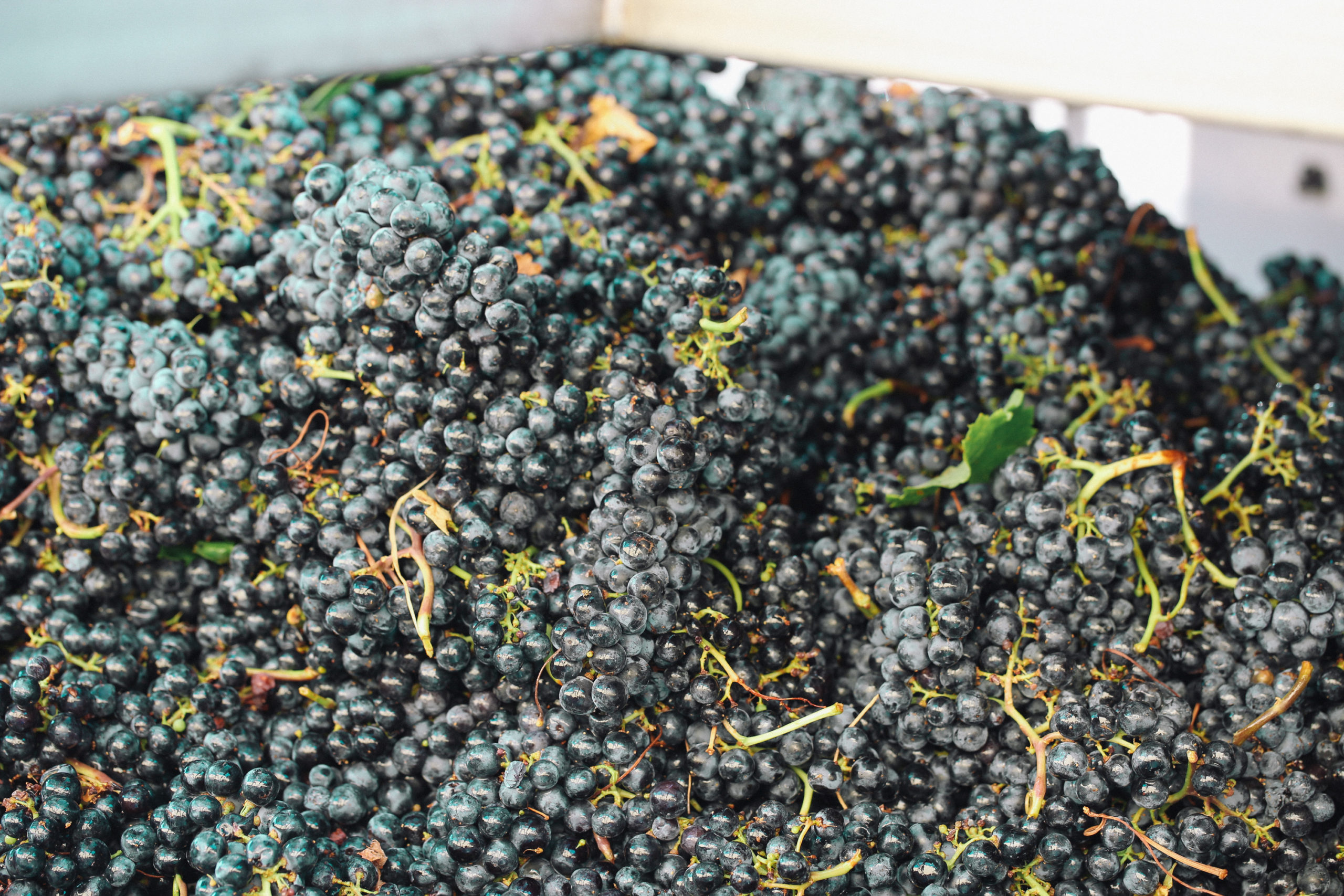
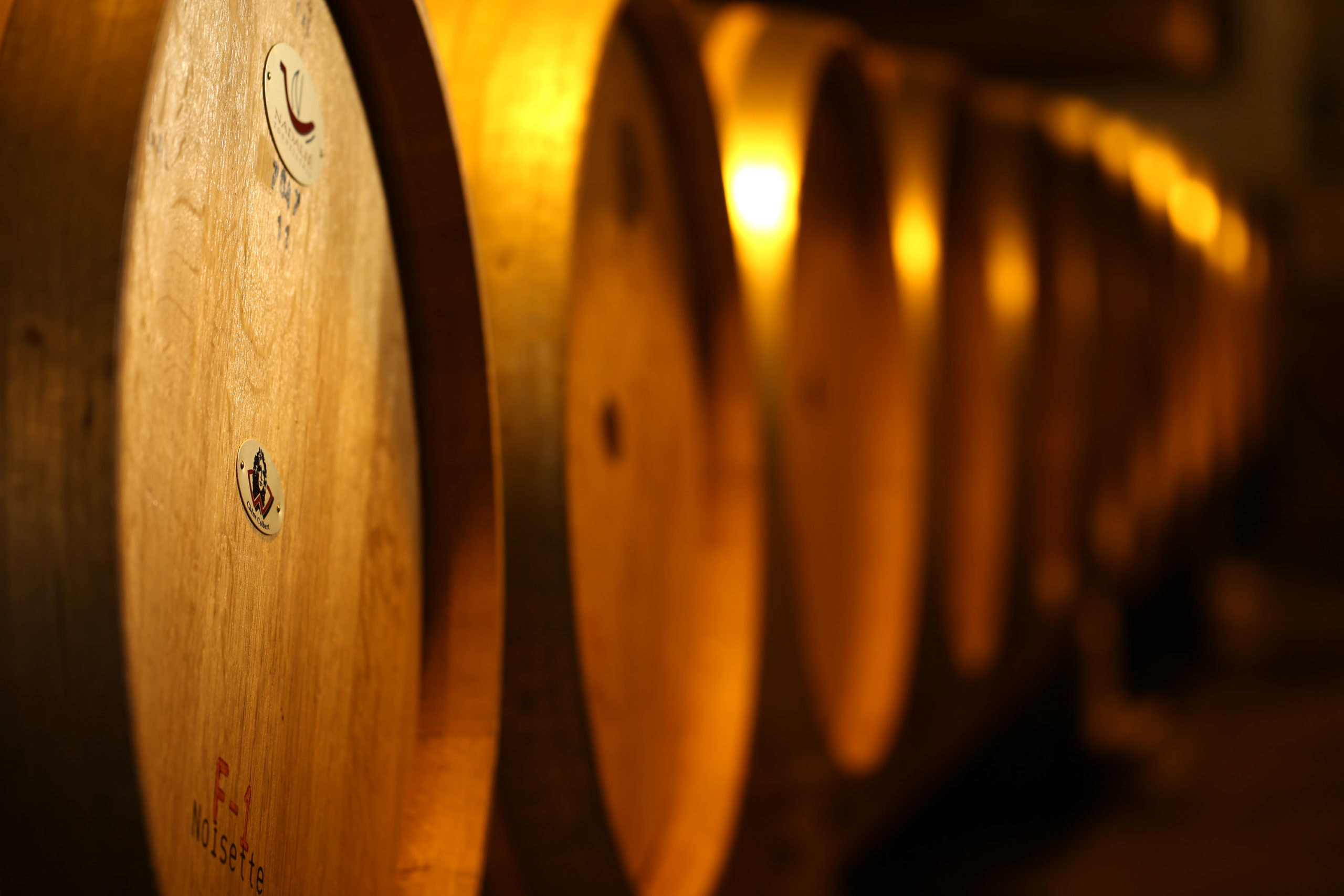
malolactic fermentation
Unlike many other cabernet producers, we move our cabernet sauvignon and merlot lots into historic oak tanks after primary fermentation in stainless steel. These towering casks were constructed onsite when the winery was built in 1976. They are living, breathing vessels–and their large size allows the flavors of the young wines to meld and tannins to soften before being transferred to small barrels for aging. Over the years, these upright wood tanks have developed a unique strain of yeast for natural malolactic fermentations, which also contributes to Jordan’s silky style.
the barrel blend
Our towering oak tanks also play a vital role in the creation of the Jordan barrel blend—another practice that is distinct in California winemaking. We choose to blend our cabernet sauvignon components in these oak tanks before they go into small French oak barrels for aging. To create this barrel blend, the winemaking team conducts hedonic tastings of the young wine lots after malolactic fermentation, evaluating wines purely on pleasure and giving each an A, B or C grade. Here, the winemakers decide which lots of merlot should be blended in to soften cabernet sauvignon’s more dry tannins—or what percentage of petit verdot will be added to elevate blueberry flavors and dark color—and if the addition of that tiny lot of malbec will give the final blend that extra gasp of elation. The wines are bare without any support of time melding with a barrel’s tannins, so there is nothing to hide behind as well. If there is something off in the wine’s quality, it will be exposed. If a mediocre wine is identified during this early phase, it is declassified and sold to the bulk market. The quality bar is set very high: the very best cabernet sauvignons in the world. Grand cru classé wines of Bordeaux are exceptional for this reason: rigorous selection. If a tank has potential, but the young wine is not expressing itself fully, we give it a special designation–kind of like a second-string quarterback–and transfer the wine into barrels separately from the barrel blend.
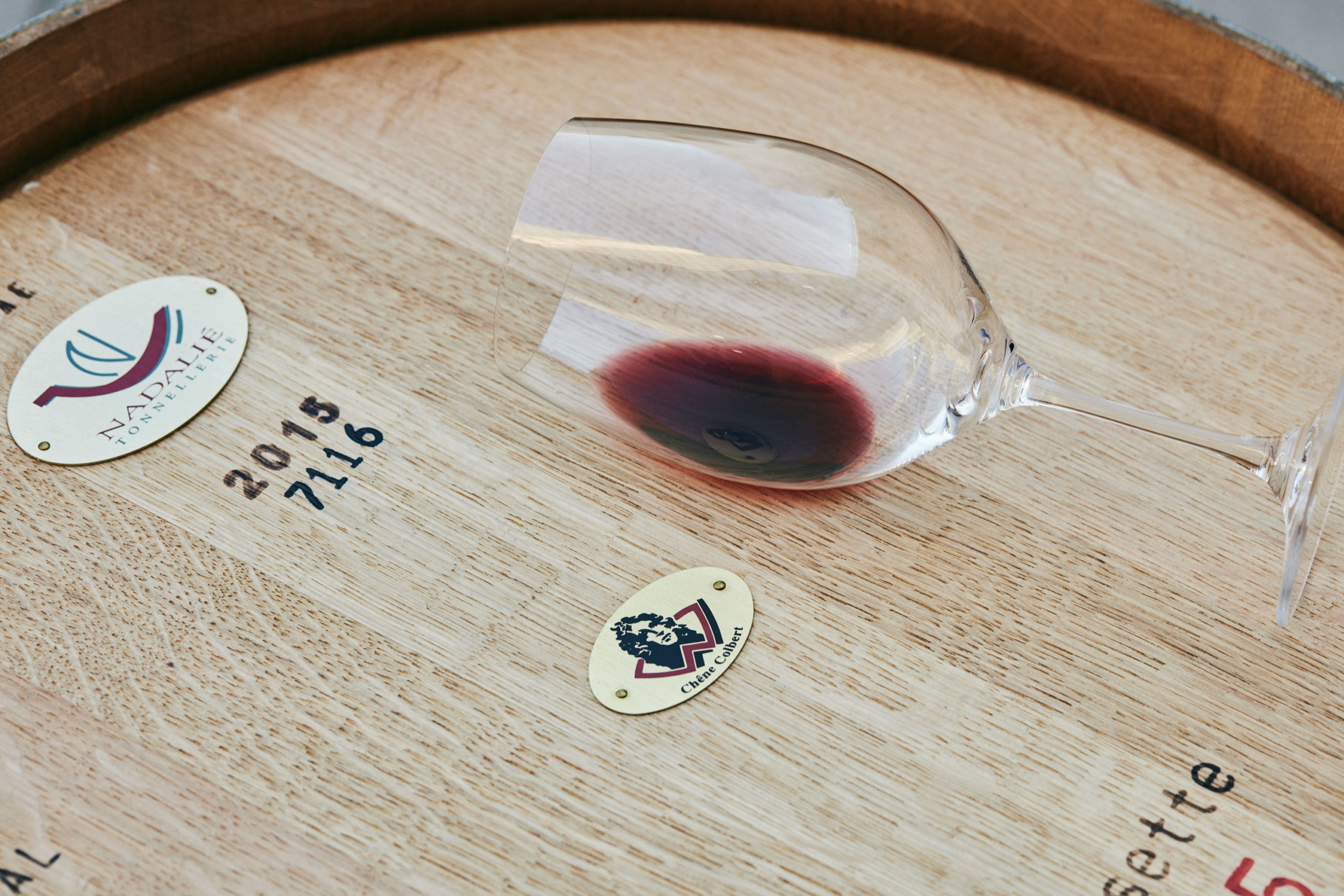
Tempering the amount of new oak used in Jordan Cabernet Sauvignon aging—about 50 percent total—also remains key to harnessing the balance between fruit and oak in Jordan Cabernet Sauvignon. Barrels from about nine different coopers, including the coveted barrels from the Colbert forest, are used to age Jordan Cabernet Sauvignon. Medium toast is the preferred seasoning to achieve a balance between the tannin and fruit in the wine. Barrels of a specific type from a single producer remain consistent from year to year.
the master blend
After 12–14 months of aging in French oak, the Jordan barrel blend is reassessed. The winemaking team also checks our potential lots to see if the oak aging helped to elevate their game to the starter position. Only the top lots are assembled for the final master blend, which earns its way into the Jordan Cabernet Sauvignon during bottling season each summer.
Experiments with new technology, which guarantee a TCA-free closure without the off-flavors that can occur from a natural cork, continue to be conducted. Our goal is to ensure that every bottle of Jordan tastes as our winemaker intended it—and that our closures can stand the test of time. That is why Jordan Cabernet Sauvignon is still bottled under natural cork even though Jordan Chardonnay, which is consumed much earlier in its life, has transitioned to the DIAM cork.
Each bottle of Jordan is individually labeled and traceable to the specific forest where its cork was grown and harvested. In the rare case that a faulty cork leads to any off characters in a bottle of Jordan Alexander Valley Cabernet Sauvignon, this tracking system enables us to accurately identify the source of the fault and make any necessary corrections.
extended bottle aging
After two full years of aging in bottle, Jordan Cabernet Sauvignon is released. Though many producers only age long-lived red wines a year before debut, we believe it’s important for the fruit, tannins and acidity to have time to harmonize—and experience has taught us that Jordan Cabernet Sauvignon is beautifully expressive and ready to drink about four years after its harvest date. So, we make the investment to age the wine longer in our cellars for the benefit of our customers.
